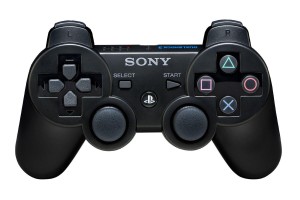“External” panoptic discipline allows a person or persons to amend the “automatic” mode with even more severe punishments, like “banning” from a server. Players are allowed to “rent” servers and then institute themselves and their friends as “administrators”. Their function is similar to the “inspectors” of Bentham’s prison who worked as subordinates to the “governor” in his updated design in 1791.

These would inspect and monitor the inmates as extensions of the central inspector. “External” administrators, likewise, extend the disciplinary paradigm built into the game, allowing for a more individualized methodology. As has already been noted, “External” administrators have the power to eject players from theirs servers and then ban them from returning. They can also add additional administrators thereby increasing the number of active inspectors (see Figure 34).
Like their pauper-Panopticon counterparts, these virtual inspectors, “[exploit] all the technologies at [their] disposal,” to monitor, discipline, and punish players not behaving according to rules they define. Email, online messaging, and a management interface that allows a comprehensive view of play, all work to ensure constant supervision, 24 hours a day, seven days a week.
Where the video game-Panopticon and Bentham’s ideal part ways is, ironically, in the overemphasis on profit. While Bentham realized the importance of profit to his designs, he was adamant that it should not come at the expense of the health and welfare of its wards. Maintaining their health and safety, and thus relative “happiness” was fundamental to Panopticon’s utilitarian origin.
Moreover, despite its dependence on their labor, the pauper-Panopticon made provisions to protect the most vulnerable of its population: the children, from the malignant influence and offences of those, “considered of bad character.” The chrestomathic-Panopticon, likewise sought to protect its students from mistreatment at the hands of any ill-willed educators or fellow. Sadly, the same cannot be said of the video game version.
In almost every aspect of the game, young players find themselves at risk. From a physical perspective, overplay can and does lead to anatomical injuries from repetitive use. In spite of the progress made in the area of ergonomics, game console designers continue to implement a controller design that they acknowledge can cause or exacerbate injury to the hands and forearms (see Figures 35-38).



